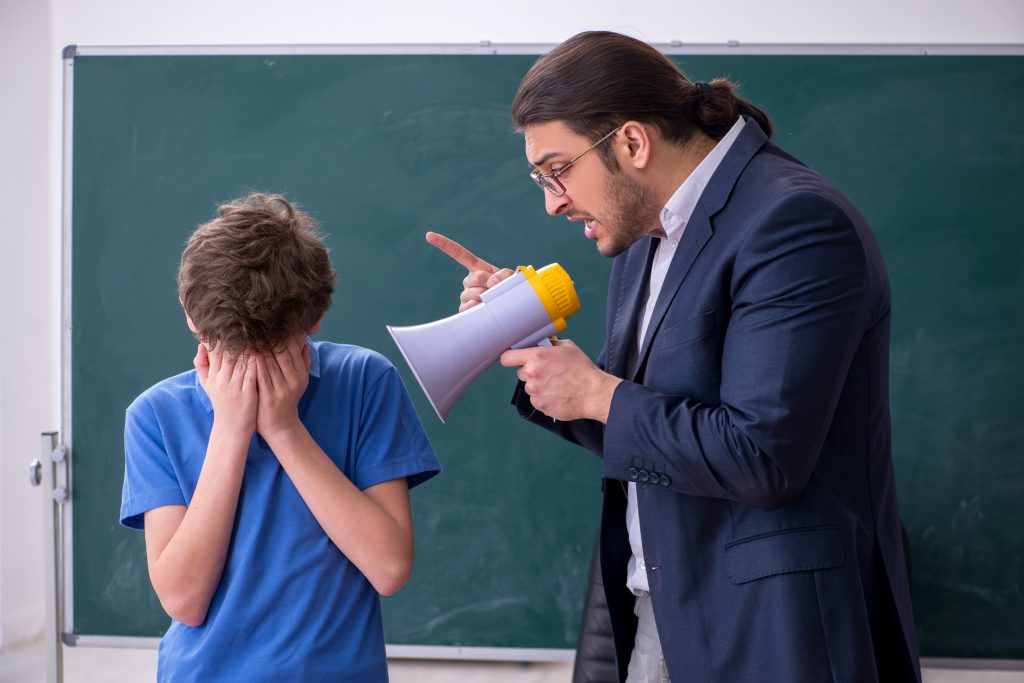
When we think of bullying, our minds often picture a child on the playground. We rarely imagine the person in charge of the classroom as the perpetrator. However, teacher-inflicted bullying is a real and deeply damaging issue that often flies under the radar. This form of bullying isn’t about physical harm. Instead, it involves the misuse of power through sarcasm, humiliation, and neglect. Because teachers hold a position of authority, other adults often dismiss these actions as simple “discipline.” In reality, teachers quietly bullying kids can crush a child’s spirit and destroy their love for learning.
Using Sarcasm as a Weapon
A teacher might use sarcastic comments that get a laugh from the class. For the targeted child, however, these words can feel like a dagger. For instance, a teacher could mock a student’s wrong answer or make a snide remark about their work ethic.
To the rest of the class, it might seem like a harmless joke. But for the child, it is public humiliation from a trusted authority figure. As a result, this erodes the student’s confidence. It also makes them afraid to participate in class discussions.
Labeling and Name-Calling
In some cases, a teacher might subtly label a child as “lazy,” “a troublemaker,” or “the slow one.” Unfortunately, these labels can become a self-fulfilling prophecy. When a child repeatedly hears this from a teacher, they begin to internalize that identity.
Furthermore, other students may adopt the label as well, leading to peer rejection. This quiet form of name-calling can define a child’s entire academic experience. Over time, it can cause lasting damage to their self-esteem.
Making Unfair Comparisons
Constantly comparing a struggling student to a high achieving, one is a classic tactic of a bullying teacher. For example, they might use phrases like, “Why can’t you be more like Sarah?” This method is incredibly destructive.
Not only does this breed resentment between students, but it also reinforces the child’s feeling of inadequacy. In effect, it teaches them that their worth is conditional. They learn that their value is based only on outperforming others.
Deliberate Neglect or Ignoring
One of the most insidious ways teachers quietly bullying kids is through neglect. This can mean a teacher consistently ignores one student’s raised hand. They might also refuse to offer help when the student is clearly struggling or overlook them during activities.
This passive form of bullying sends a powerful message to the child: “You don’t matter.” Consequently, the student feels invisible and unimportant. This often leads to academic disengagement and social withdrawal.
Publicly Shaming for Behavior or Grades
There is a huge difference between private correction and public shaming. A bullying teacher, for example, might announce a student’s poor test score to the entire class. They may also punish a minor infraction in a way that draws maximum embarrassment.
This approach is not about discipline; it is about humiliation and asserting dominance. Ultimately, it creates a classroom culture of fear and can trigger intense anxiety in the targeted student.
Holding Grudges and Unfair Grading
Sometimes, a teacher who holds a personal grudge may use their grading power to punish a student. For instance, they might grade that student’s work more harshly than others. They could also find fault where there is none or refuse to acknowledge improvement.
Because grading can be subjective, this form of bullying is extremely difficult to prove. As a result, it leaves the student and their parents feeling helpless and frustrated.
Imposing Isolating Punishments
Punishments designed to ostracize a child are a form of social bullying. This could involve forcing a student to sit alone at lunch. It might also mean excluding them from a fun class activity or making them face a corner for an extended time.
While time-outs can be an effective strategy, these specific punishments are meant to isolate and shame the child. Therefore, they make the student an easy target for their classmates.
Disclosing Personal or Sensitive Information
A teacher who shares a student’s private information with the rest of the class commits a serious breach of trust. This information could be about a difficult home situation, a learning disability, or a medical condition.
This is not only a profound violation of privacy but also a cruel act. It can lead to teasing and judgment from peers, which only compounds the child’s distress.
Creating a Classroom of Fear, Not Respect
Ultimately, the impact of a bullying teacher extends beyond the targeted child. It creates a toxic learning environment for everyone. When students see an adult misusing their power, it teaches them that bullying is an acceptable way to treat others. Recognizing how teachers quietly bullying kids is the first step for parents and administrators to intervene. A child’s education must be built on a foundation of safety and respect, not fear and intimidation.
Have you or your child ever experienced a subtle form of bullying from a person in authority? How did you handle it?
Read more:
8 “Harmless” Nicknames That Your Family Gives You That Are Actually Hurtful
Parenting Boys in 2025: The Red Flags We Need to Stop Ignoring
The post 8 Ways Teachers Are Quietly Bullying Kids—And No One Stops Them appeared first on Budget and the Bees.







